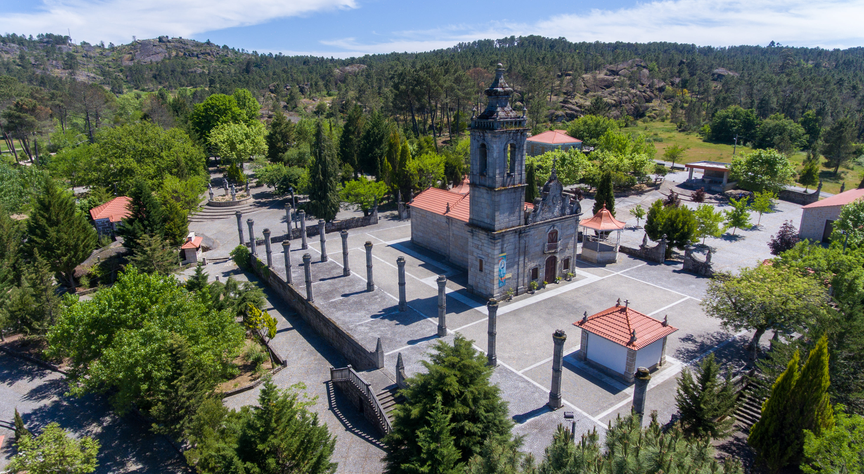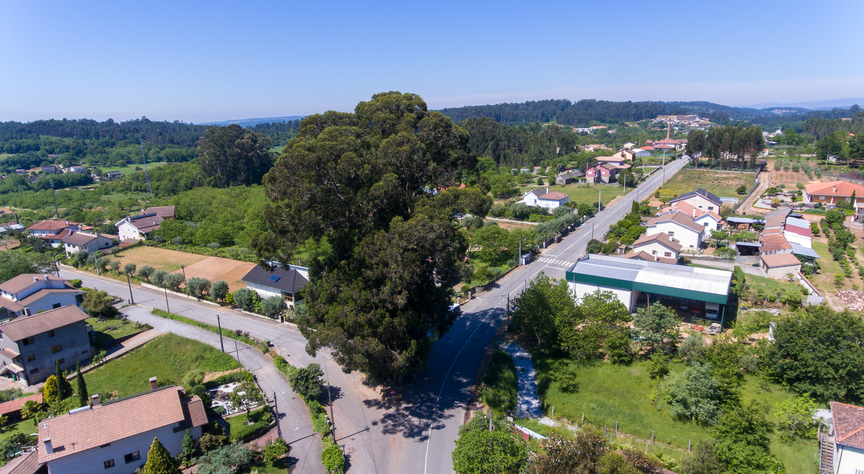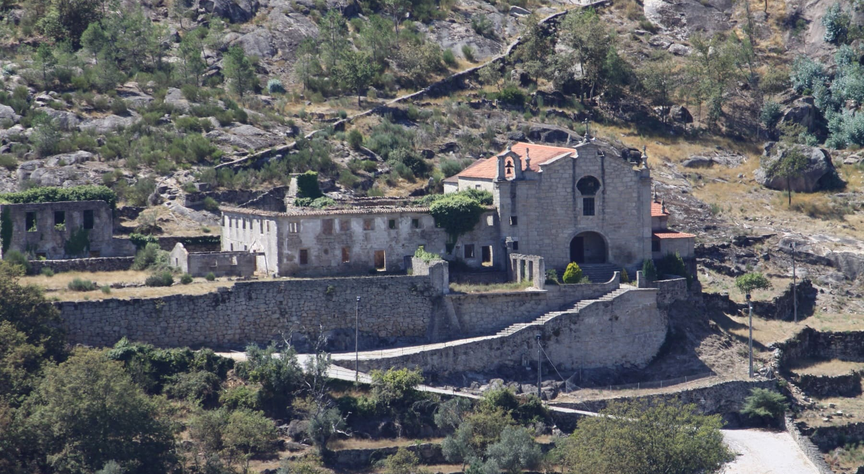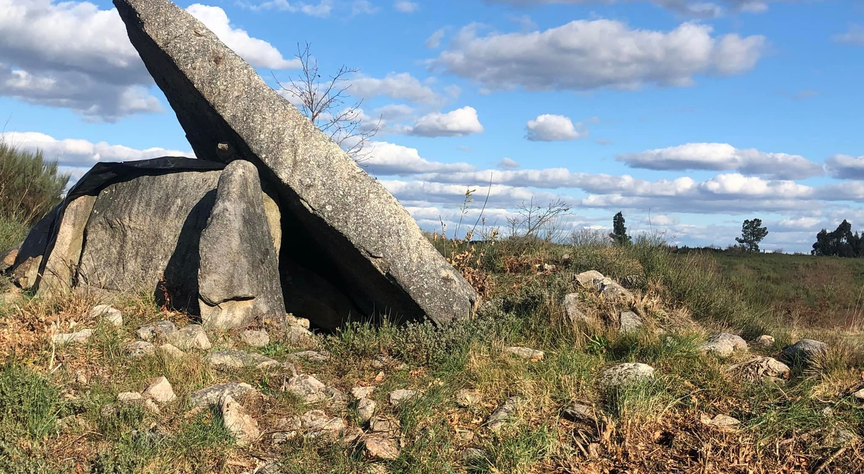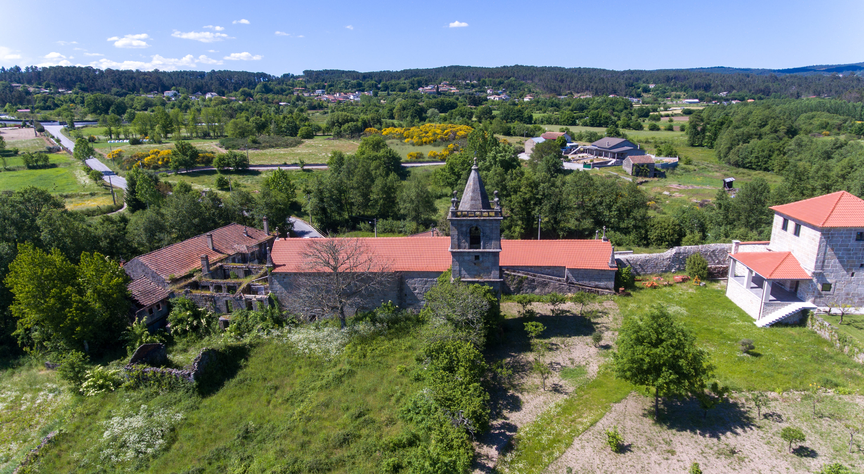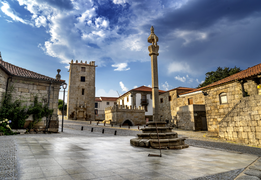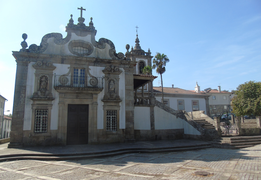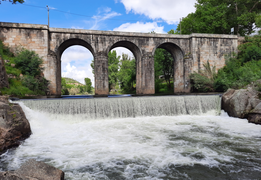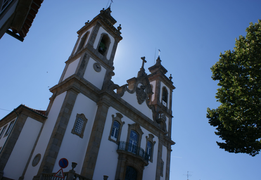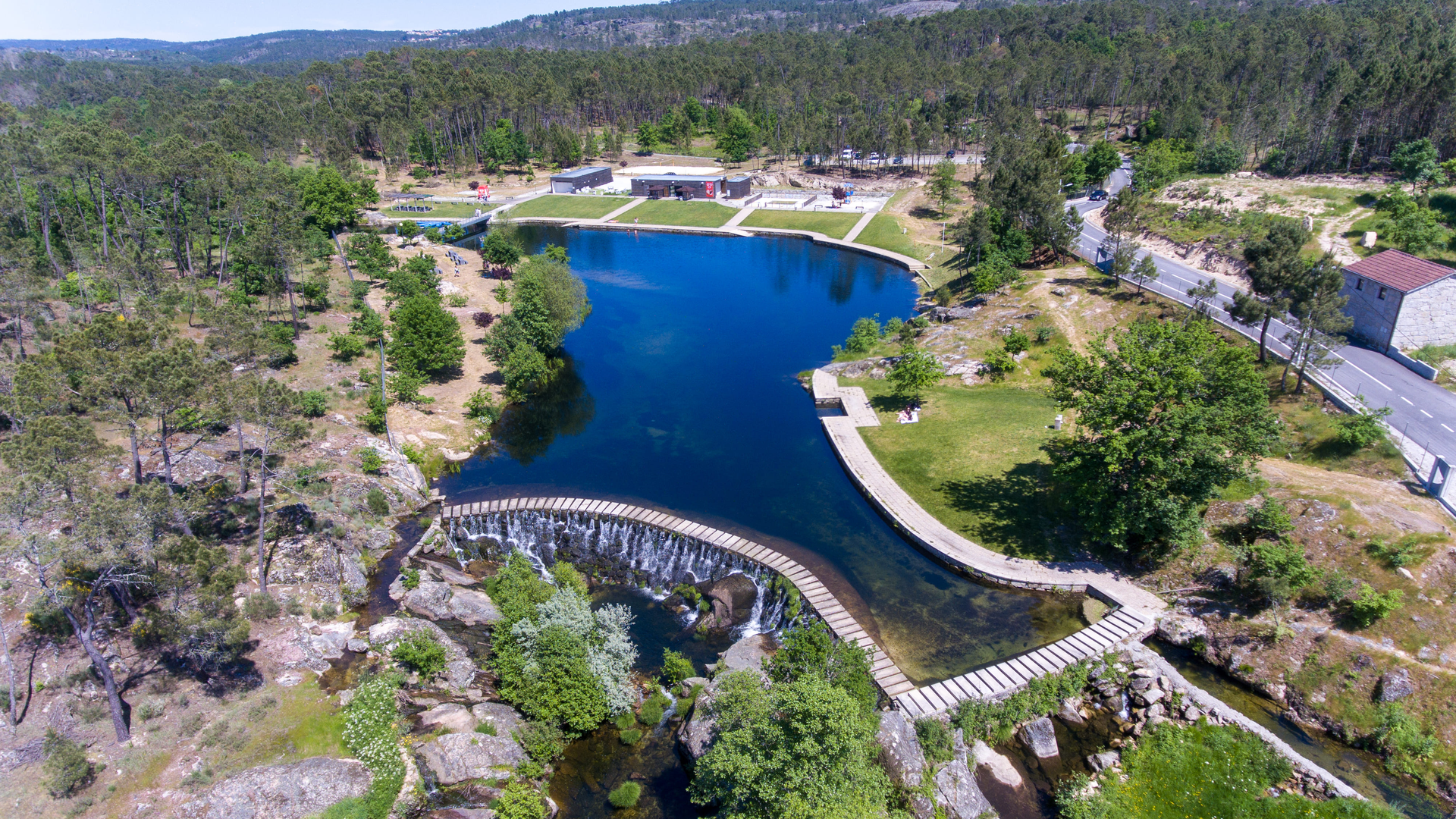
SÁTÃO
With over 900 years of history, the municipality of Sátão is favoured by exceptional natural conditions, with a subsoil rich in raw materials and vast tracts of fertile land. The topography and the abundance of watercourses have played a crucial role since the beginning, influencing both the natural and built landscapes over the centuries.
This extensive historical period has left behind a rich heritage that is unveiled as you explore the municipality of Sátão, revealing a diversity of landscapes, an abundance of religious architecture and deep archaeological remains, eloquent testimonies to the past and history.
Part of the prestigious Dão Wine Region, Sátão stands out for its lush green pine forests and fields, which contrast harmoniously with the granite and schist valleys crossed by numerous watercourses. Expansive vineyards embellish the plateau landscape. Despite the challenging climatic conditions, the region displays a remarkable diversity of grape varieties, fruits, vegetables and mushrooms, with special emphasis on the míscaro, highlighting the continuing importance of agriculture for the subsistence of the local population.
Rooted in a multitude of tangible and intangible heritages, and full of symbolism, the municipality of Sátão reveals its unique identity in folklore, popular festivals, pilgrimages, proverbs, the Songbook, legends and superstitions, as well as its unquestionable contribution to gastronomy and the hereditary values that define it.

Trabulo river beach
HeritageHidden among the pinewoods of the parishes of Ferreira de Aves and Romãs, Decermilo and Vila Longa, the Praia Fluvial do Trabulo is one of nature's best kept secrets, with a lovely mirror of water where you can enjoy the view, the water, the warmth and the natural beauty of this beach, a very well-kept space with good facilities such as toilets and a bar, a picnic area, a hammock for the younger ones, a children's playground and lifeguard surveillance. As part of a more rural lifestyle, the Praia Fluvial do Trabulo aims to be associated with the historical, cultural, natural, gastronomic and architectural heritage that exists in the municipality, thus fitting in with the strategic development of the municipality and the municipality's greater commitment to tourism.
More information

Lord of Agony
HeritageOn the outskirts of Avelal, overlooking the Vouga, Ferreira and Senhora da Lapa, is this curious sanctuary built into a huge cliff, under which is the altar, reminiscent of the sanctuary of Nossa Senhora da Lapa, as typical as it is interesting. Legend has it that a horseman was fleeing from some thieves, running through valleys and crags. When the rider was about to fall over a precipice, he said ‘Our Lord of Agony, save me!’ At that very moment, the horse stopped and the rider looked to the side and saw the Lord of Agony under a crag. Where the horse had stopped, there were the marks of the horseshoes on the rocks. A few days later, the bishop of Viseu learnt what had happened and went to collect the Lord of Agony from the Cathedral of Viseu, but the next day the Lord of Agony was once again under the rock in Avelal. The bishopric then decided to pick up the Lord of Agony in a procession, so he remained in the Cathedral in Viseu, and a smaller crucified one remained in Avelal.
More information

Contige eucalyptus
HeritageOn the side of national road no. 229, which connects Sátão to Viseu, we can find the queen of the trees in the municipality of Sátão, the famous ‘Eucalipto de Contige’, which, according to the National Forestry Authority, is considered a ‘Monumental’ Tree and has been classified as a Tree of Public Interest by the Institute for Nature Conservation and Forests (ICNF) since 1964, through publication in the Government Gazette no. 182 II Series of 4 August.
Chosen as the ‘Portuguese Tree of 2023’ and Portugal's representative in the European ‘Tree of The Year 2023’ competition, this eucalyptus is famous for its disproportionate size, especially its 12 metres in perimeter, close to the ground, since in height it will be ‘only’ 43 metres, and is considered, in terms of height, crown and perimeter, to be the largest tree in Portugal, and its monumentality will have earned it its protection, according to the locals, during the construction of the Dunárias road.
Planted on the land that belonged to Dr Luiz Xavier do Amaral Carvalho and D. Constança de Mesquita Garcia de Mascarenhas, owners of Casa Xavier in Rio de Moinhos (municipality of Sátão), which was expropriated for the construction of the road in 1878, the tree's monumentality earned it the right to be safeguarded, causing the road profile to bow to it, with the road drawing an ‘S’ as if to detract from this beautiful specimen.
More information

Convent of St Euphemia
HeritageOf religious architecture, Romanesque-Gothic, Mannerist and Baroque, situated on the banks of a stream, between Veiga and Vila-Boa, founded in 1111, the Convent of Santa Eufémia, a cloistered convent consisting of a longitudinal church with a single nave, chancel, sacristy and two choirs, belvedere, outbuildings, inn and chaplain's house, housed Benedictine nuns. Located in the Ermida de Santa Eufémia, this convent was built next to the chapel of Santa Eufémia and was, until 1136, a community of hermits.
This priceless jewel is completely covered inside with valuable 17th century polychrome carpet tiles, similar to those of Senhora da Oliva in Tojal, the sanctuary of Nossa Senhora da Lapa and the chapel of the University of Coimbra. Framing the walls are four beautiful gilded tribunes.
More information

Shrine of Our Lord of the Ways
HeritageLocated in Rãs, in the parishes of Romãs, Decermilo and Vila Longa, on the left bank of the River Vouga, the Sanctuary of Our Lord of the Ways, built at the beginning of the 19th century, presents us with a grand chapel, where its imposing bell tower stands out, and to the left of the chapel we find the great mystery of this place, a set of 15 columns that are said to have been built to support a roof that would serve as a resting place for the pilgrims and on the day of the pilgrimage to place the floats, but it seems that the roof was stolen without anyone noticing.
Although there is no specific data on the exact date of the cult at the Sanctuary of Our Lord of the Ways, we do know that it is linked to the cult of Our Lady of Lapa and Santiago de Compostela, where since the 16th century the cult has been intensified. The legend behind the festival tells us that a nobleman who had a large farm in the area and provided shelter for pilgrims going to Senhora da Lapa and Santiago de Compostela appeared dead and a small niche was erected in his honour, called Senhor dos Caminhos (Lord of the Ways), which welcomed pilgrims. Since then there has been an extraordinary growth in faith that has brought to this day one of the largest pilgrimages on the tourist trail and this magnificent space that leaves no visitor indifferent.
More information

Church of Our Lady of Oliva
HeritageIn the village of Tojal, on the edge of the town of Sátão, on the edge of the National Road, stands one of the most glittering jewels in our artistic treasury.
Dating back to the mid-17th century, this beautiful granite building, classified as a Property of Public Interest, hides inside a complete covering of extremely valuable 17th century polychrome carpet tiles, as well as 17th century gilded wood carvings in Joanine art. As you enter this Mannerist-style church, founded in 1633 by Feliciano de Oliva e Sousa and inaugurated in 1640 for a Dominican community of women, your gaze focuses on the chancel, where the ornate polychrome coffered ceiling stands out, as does the gilded woodwork on the altar.
The entrance is through a side door, in an area where you can see a fountain, repositioned when it was restored in 1744. Due to the name of the saint honoured here, Nossa Senhora da Oliva, the Oliva sewing machine factory in São João da Madeira played an important role in the most recent restorations, as it identified with the saint, thus becoming the first company in Portugal to take on artistic patronage in favour of the restoration of a monument.
More information

Chapel of Our Lady of Hope
HeritageThe Chapel of Nossa Senhora da Esperança, located in the town of Abrunhosa, parish of S. Miguel de Vila Boa, municipality of Sátão, has been classified as a Property of Public Interest since 19-02-2002 and its pipe organ, made by the master organ builder Francisco António Solha, was also previously classified as a Property of Public Interest on 12-09-1978. It is a jewel of art of incredible beauty, in the Joanine Baroque style, whose simplicity and mannerist coldness of the exterior façade, painted white and framed in granite, contrasts with the splendour of the interior, driven by the gilded wood carving, which, in perfect harmony with the blue and white figural tiles and the paintings on the ceiling and walls, completely covers the interior of the building. Built in the 18th century by order of Canon Luís Bandeira Galvão, on the site of a primitive chapel, to fulfil a vow made to his uncle, his namesake and brother of the confraternity of Our Lady of Hope, the grandeur of this chapel is praised in various published documents, such as: ‘Santuário Mariano’, by Friar Agostinho de Santa Maria, ‘Terras do Concelho de Sátão’, by Albano Martins de Sousa and ‘A Capela de Nossa Senhora da Esperança, A Obra de Arte Total num Depoimento de Fé’, by Maria de Fátima Eusébio.
More information

St Andrew's Church
HeritageThe parish church of Ferreira das Aves, classified as a Property of Public Interest, dates back to the time when the village was ordered to be populated by King Henry and Queen Teresa, and then passed into the possession of the Knights Templar. Like so many others in the centre of the country, it was built in the 12th century, after the reconquest and the formation of the municipality of Ferreira in 1162. The story goes that the stone from the existing castle or bastion, now no longer in use, was used. A Romanesque style church, like all those from that period, much smaller than the current one, as the population was also small, as was the case throughout the centre of Portugal, where some elements of the cornice and, above all, the famous ‘Portal de Santo André’ on the south façade of the new building remain from that primitive construction.
More information

Orca do Tanque
HeritageThe Orca do Tanque, a national monument, also known as the Casfreires orca or Orca Cimeira, was built in the Late Neolithic period, around 6000 years ago, and was reused by communities from the late Copper Age or early Bronze Age. It has a polygonal chamber made up of nine pillars and a 6 metre long corridor. The tumulus is around 25 metres in diameter and 2 metres high. At least six of the chamber's shafts had paintings, which are unnoticeable today.
Several crosses, dimples, inscriptions and dates from the 18th and 19th centuries were engraved on the top of the roof slab, possibly related to the confirmation of the municipal boundaries between Sátão and Fráguas. The work in progress has yielded extensive information about the communities that explored this territory, and several polished stone axes, a very diverse set of arrowheads, several microliths, fragments of blades (knives) and hundreds of ceramic fragments have been found.
More information

Fraga Convent
HeritageThe Convent of Senhor Santo Cristo da Fraga, built at the end of the 18th century and classified as a site of public interest, stands on the south-eastern slope of the Fraga mountain range and originated as a chapel built on the spot where a miraculous image of the crucified Christ was discovered when two men were looking for a stone for a millstone. Although only the church and the ruins of the temple remain, this is still one of the municipality's places of interest, where the front of the temple stands out, as do the interior altarpieces in baroque, rococo and revivalist gilded woodwork, and where we also have a human treasure of great value, the tomb of the famous wise and virtuous Friar Joaquim de Santa Rosa de Viterbo, who lived in the Fraga Convent and wrote the ‘Elucidário’ and other books of real value, and is buried in the cloister floor.
